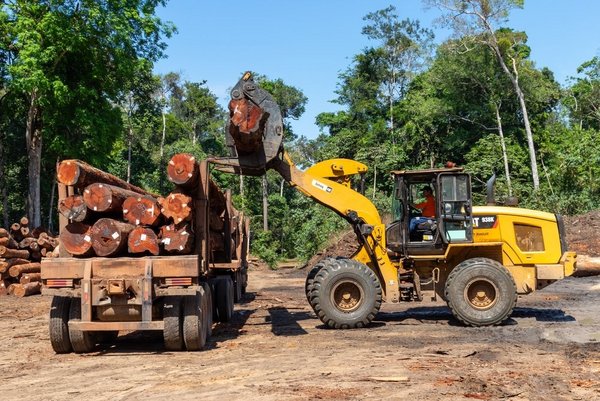 Read this article in French
Read this article in French- Share this article
- Subscribe to our newsletter
Greenhouse gas emissions from global wood harvests are undercounted
A new study by the World Resources Institute in Washington D.C., USA, published online on the 5th July in the magazine Nature, finds that the world’s yearly wood harvests are likely to emit 3.5 to 4.2 billion tons of carbon dioxide equivalent per year, more than 10 per cent of recent global annual emissions of carbon dioxide. It also finds that these emissions are typically not counted in both scientific papers and public policies. This level of emissions is more than three times the annual emissions from aviation and equals common estimates of the emissions from deforestation and other land use change due to agricultural expansion.
The study, The Carbon Costs of Global Wood Harvests, also finds that emissions from wood harvests are set to grow because of rising global demand for wood, projected at 54 per cent from 2010 to 2050. As a result, the paper projects that emissions will increase by roughly one-third, from around three billion tons in 2010 to around five billion tons in 2050. To provide this wood, the world will also harvest around 800 million hectares of forests (measured by the equivalent area if all harvests were by clearcut).
“Vast emissions from harvesting wood have mostly been ignored because of faulty carbon accounting,” said Tim Searchinger, one of the study’s authors, Senior Research Scholar at Princeton University in New Jersey, USA, and Technical Director for Agriculture, Forestry and Ecosystems at the World Resources Institute. “Global forests are growing and sequestering carbon due to climate change itself, and in the northern hemisphere they are also growing back from massive deforestation in the previous two centuries,” explained Searchinger. “In these areas, most studies have treated the additional harvest of wood as having no climate effect.”
“Our new paper provides both bad and good news,” said Dr Liqing Peng, another author and a food and agriculture modeller at the World Resources Institute. “On the one hand, rising wood demand is likely to increase the emissions from wood harvesting by one third over 40 years. On the other hand, the paper identifies significant ways to reduce these emissions.”
A new global forest harvest model
The paper is based on a novel global forest harvest model that adds more detail to forest harvest estimates. It also uses a new approach that credits wood harvests for the fact that after harvests, forests can regrow and reabsorb carbon and over many decades pay off what is known as the “carbon debt”, which is the added carbon in the atmosphere for those decades.
The new paper accounts for this regrowth and the temporary storage of carbon in furniture and buildings and counts the carbon cost of the harvest by placing a cost on this net increase in carbon during these decades.
“A key finding is that so long as the world values reducing climate change in earlier decades even a little more than adding to warming for decades and reducing it later, the costs of this increased carbon are similar,” said Peng. “Increasing warming in the short term causes more immediate harm and reduces the time people have to solve climate change before facing catastrophic damages.”
“One strange result of many studies today is that they consider the harvest of wood in the tropics to add emissions, but wood harvests in the temperate zone appear to have no effect on the climate,” said Richard Waite, an author and Senior Research Associate at the World Resources Institute. “That misleading result occurs basically because Europe, the U.S.A., and China cleared more forests in the past. When they only report the net effect of new harvests against the regrowth of previously cleared forests, it looks like new harvests have no effect. Yet the fact that other trees are regrowing from past clearing does not make wood use inherently carbon neutral because harvesting wood in these countries still reduces the total amount of carbon in the forest”, the scientist said.
“One reason this paper is strangely good news is that scientists have been correctly estimating the amount of carbon entering the air; they have just underestimated the human contribution to these emissions,” said Searchinger. “By correctly estimating these emissions, we hope to encourage the forest products industry and its consumers to find more ways to grow and use wood more efficiently to reduce these emissions.”
(WRI/wi)
Reference:
More information:
Link to the World Resources Institute





Add a comment
Be the First to Comment